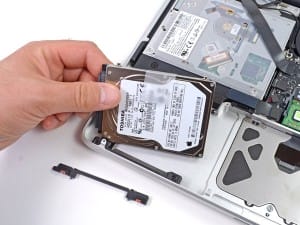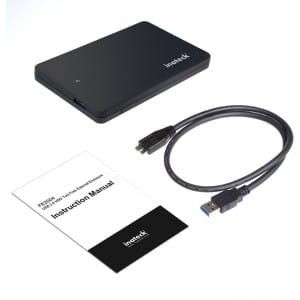Clone Hard Drive
 Clone Hard Drive: a reader asks…
Clone Hard Drive: a reader asks…
My original 256gb C: drive is getting full so I bought a larger 1TB SSD to replace it. When I clone the drive, it creates a partition that is the same size as my current C: drive, wasting the extra space I bought. In the process of trying to figure things out I attached both drives (SSD-old and SSD-new) and got a black screen message (from Windows trying to start) saying that there was something wrong, it couldn’t boot, and that to solve it I should disconnect other drives. What should I do next? There could have been issues with having lots of wires dangling out of the back. 🙂
Cloning your hard drive makes an exact duplicate of the original hard drive onto the new hard drive. Drive-cloning software always gives you the option during cloning to expand the partition to the new larger size, so you end up with a new, larger C: drive (for Microsoft Windows operating systems). Each software product has a process for how to do that in their documentation. If all else fails, you can always run Windows’ built in disk manager afterwards to use the unallocated space. Search for ‘disk manager’ and run it to expand the partition to the full available drive space. You can also create a separate partition with that unallocated space if you prefer to keep your personal files separate from the Windows installation.
It sounds like you’ve run into trouble with one critical issue: a computer system can only have one boot drive at a time. The process for cloning your hard drive is very straightforward:
 Connect a new drive and run the cloning software
Connect a new drive and run the cloning software- Disconnect the old drive and plug the new drive into the original SATA port
- Boot up with the new drive
Part of the cloning involves creating what’s called a Master Boot Record (MBR) on the drive, which is how the drive identifies itself to your computer system as a boot drive. You run the risk of corrupting the MBR on one or both drives if you leave out step 2 of the process. So-called S.M.A.R.T. drives identify themselves to your computer’s BIOS, and if the BIOS gets two boot identifications, it won’t boot up. Some drives may try to change their own MBR in this situation. Some computer systems have built-in utility software that may even try to change the MBR or BIOS to get things to work. Both these situations can make a worse mess.
Simple solution, never skip step 2 when cloning drives.
This website runs on a patronage model. If you find my answers of value, please consider supporting me by sending any dollar amount via:
or by mailing a check/cash to PosiTek.net LLC 1934 Old Gallows Road, Suite 350, Tysons Corner VA 22182. I am not a non-profit, but your support helps me to continue delivering advice and consumer technology support to the public. Thanks!
 Connect a new drive and run the cloning software
Connect a new drive and run the cloning software





